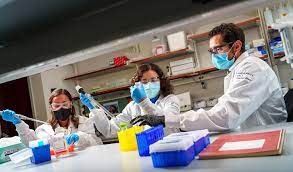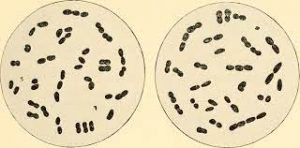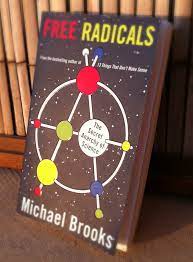Theories On Aging
Video Link: https://vimeo.com/182769060
Video Download: Theories On Aging 3
Video Stream: Theories On Aging 3
Video Link: https://vimeo.com/182769057
Video Download: Theories On Aging 2
Video Stream: Theories On Aging 2
Video Link: https://vimeo.com/182769058
Video Download: Theories On Aging 1
Video Stream: Theories On Aging 1

Theories on Aging
Aging is a complex process that has a variety of working parts. Medical scientists and biological researchers continue to study aging to give humanity a more complete understanding of the mechanisms by which it occurs. They also try to learn ways to slow down or even reverse some aspects of the aging process.
There are three primary mechanisms that control how we age: Genetic Aging, Biochemical Aging, and Physiological Aging.
Genetic Aging
One of the three mechanisms by which human beings age is genetic. There are many forms of genetic aging, but all revolve around the idea that genetic breakdown causes the body to age over time. As we grow older, the genes become more prone to mutate. These mutations can cause a variety of issues to occur, one of which is cancer.
If a gene alters in a way that encourages endless replication, this significantly increases mortality risk, for example. Genetic mutations can also lead to other, less severe, genetic issues which simply impede the body's ability to perform the functions necessary to maintain a healthy and optimally functional body.
Small formations on the ends of our genes known as Telomeres also have an impact on aging. Telomeres are sections of junk genes at the end of our chromosomes that keep the active genetic code intact. As we age, these Telomeres become shorter and shorter, increasing the risk of genetic malfunction and mutation.
Finally, there are certain genes that only seem to express themselves later in life or when certain negative pressures are applied. And these negative pressures cause the aging process to occur more quickly.
Biochemical Aging
Biochemical Aging is a precursor of many forms of Physiological Aging. Biochemical Aging refers to intracellular and extracellular processes that contribute to aging. In some cases, this is the result of natural chemical processes which cause our body to slowly break down over time, such as the inevitable oxidization, which occurs as a natural side-effect of the chemical processes which keep us alive.
Other symptoms of biological aging result from changes in how our body functions, often for reasons that we are just beginning to understand. The way that our bodies produce Human Growth Hormone and Testosterone are good examples of this form of Biochemical Aging.
When we are young, our bodies produce ample levels of these hormones that encourage growth during adolescence and support good health during early adulthood. Around the age of thirty, however, these hormones start to decline because the brain sends fewer and fewer signals for them. Also, hormones that control stress are produced in lower concentrations with age, which can increase the influence of psychological and physiological stress, which can cause other issues related to aging to become much more dangerous and severe.
early adulthood. Around the age of thirty, however, these hormones start to decline because the brain sends fewer and fewer signals for them. Also, hormones that control stress are produced in lower concentrations with age, which can increase the influence of psychological and physiological stress, which can cause other issues related to aging to become much more dangerous and severe.
Physiological Aging
Physiological aging refers to the physical changes that take place as a result of aging. Our teeth represent one of the most noticeable markers of physiological aging. Our teeth grow into place after our baby teeth fall out when we are young. After your teeth fully develop, your body has no mechanism to rebuild them, and they slowly degrade over time, depending on how well you take care of them.
Graying hair is another type of physiological aging. Hair color is actually produced by tiny cellular organs known as Melanocytes. The color of your hair is dependent upon the type of pigment that these cells create, as well as the quantity and concentration at which they are produced. The more melanin that the Melanocytes produce, the darker your hair will be.
People get gray hair because the older they get, the less pigment that Melanocytes secrete over time. Scientific studies are being performed regarding how to influence these cells to continue producing pigment later in life, potentially allowing aging men and women to naturally maintain their natural hair color.
Other Physiological aging changes are more than cosmetic, however. There are certain processes that occur regardless of how you take care of yourself as you grow older. Your baseline blood pressure will slowly go up over time, and your heart muscles will slowly harden, a condition known as atherosclerosis. Many physiological signs of aging can be alleviated with medication or a healthy lifestyle, but the general trends will continue over time without particular forms of treatment (many of which don't exist today).
How We Age Does Not Explain Why We Age
These three concepts, Physiological Aging, Biochemical Aging, and Genetic Aging, only serve to explain the processes by which we age. However, these processes do not answer the ultimate question of Why We Age. There are a number of theories associated with answering the question of why we age, but all of these theories belong to two distinct classes: Program Theory and Error Theory.
Program Theory assumes that aging occurs for evolutionary reasons to improve the species' effective viability. There are a number of means by which this can be true, and it assumes that from the day that we are born, we are designed to progress down a set path from birth to death which maximizes the long-term survival of the species.
this can be true, and it assumes that from the day that we are born, we are designed to progress down a set path from birth to death which maximizes the long-term survival of the species.
These programmed theories can be considered like a series of life stages that eventually lead to death.
Error Theory, on the other hand, assumes that we are not genetically designed to self-destruct, but it is the result of a potential multitude of malfunctions that slowly reduce the viability of an organism until it eventually dies.
A wide variety of forces pressure an organism to break down and reach the end of its lifespan. It is incredibly important to note that the reality is likely much messier than a single theory, and a multitude of pressures inevitably lead to aging, which is likely related to both Program Theory and Error Theory hypotheses.
Below is a collection of some of the theories associated with Why We Age:
Program Theories of Aging
Programmed Senescence
This theory behind aging centers around the idea that we are programmed to age from a genetic level. It assumes that certain genes turn on at a certain stage of the lifespan, which changes how our body works at a cellular level. This creates a cascade of change which causes our bodies to slowly deteriorate over time.
There are a number of cellular processes in the human body that involve programmed cell death, which is also known as apoptosis. Advanced theories regarding Programmed Senescence hypothesize that the genetic code of all animal species induces aging as a form of organism-wide apoptosis, making way for the younger generations.
Endocrine Theory
This Programmed Aging Theory hypothesizes that the endocrine system can control the rate at which the organism ages based on both a natural biological clock and outside influences that may induce or postpone aging. This theory is also known as the Hormone Theory of Aging.
There are many insects, for example, that have the ability to live much longer lives if the conditions are not ideal for reproduction and procreation. If it is excessively cold, there is not enough food, or there are not enough partners, many insect species will release hormones that halt or slow down aging until conditions are riper to create offspring.
In human beings and other mammals, Growth Hormone and Sex Hormone production decline around midlife until the end of the lifespan. There is powerful evidence that these hormones have a positive impact on health and longevity, and there are those that argue that the body reduces the production of these Anti-Aging Hormones over time so that the older generation can make way for the new generation.
Immunological Theory
This aging theory hypothesizes that immune systems weaken over time due to evolutionary pressures to encourage the organism to eventually become ill and die. This theory is also known as Immunosenescence. When we are young, we are incredibly resilient to disease, but the older that we get, the less able our bodies are to fend off illness.
There is some evidence that an organism's ability to fight disease drops over time without regard to external factors, which leads some to suggest that this is an evolutionary strategy to encourage the young and healthy to acquire dominance over time. This change isn't exclusively the result of exterior factors but a result of changes that are deeply embedded in our genetic code.
this is an evolutionary strategy to encourage the young and healthy to acquire dominance over time. This change isn't exclusively the result of exterior factors but a result of changes that are deeply embedded in our genetic code.
Error Theories of Aging
Wear and Tear
This theory is quite straightforward. Our bodies grow and develop through childhood and adolescence, but after our bodies reach a point of peak performance, certain parts of our body start to age and decline in function because they do not have the capacity to heal themselves or have a limited ability to heal themselves.
One example of wear and tear is the scarring deterioration of the skin. When you receive a cut, your body has the ability to seal itself up and maintain a closed system, but if scars don't heal properly, they will remain on the skin for the rest of your life because the body does not have the means to make the marks associated with these old wounds disappear once they are fully healed.
Another example of wear and tear involves the liver. The liver is an organ that has a limited ability to heal itself. Liver damage can result from a number of different lifestyle choices, including alcoholism, obesity, and drug abuse. The liver expends a lot of energy filtering impurities out of the body, and if too much is consumed for too long, the liver starts to become overwhelmed by fat tissue and cirrhosis.
Rate of Living
This form of aging is based on the hypothesis that, regardless of any evolutionary benefit, animal organisms have a lifespan that is highly correlated with their metabolism throughout their lives.
For example, rabbits and other small animals with fast heartbeats tend to have short lifespans. Animals like turtles, whales, and elephants have slow metabolisms associated with very slow heartbeats and tend to have very long lifespans.
Although metabolism does seem to play a certain correlative factor with regard to the average lifespan of various species, it is not a hard rule, and evidence suggests that it does not apply effectively to humans. Low Metabolism in humans is associated with a shorter lifespan and is correlated with health issues such as obesity and cardiovascular disease.
Crosslinking
Crosslinking is a theory of aging that assumes that the older we get, the more links that the proteins in our body make, causing them to no longer function as effectively. One example of crosslinking which leads to physical aging is skin elasticity.
When we are born, our skin is soft and returns to position quickly if pulled or compressed. This is because the collagen in our skin is optimally linked. The older that we get, the more cross-linkages that are made among the collagen of our skin, which causes the skin to tighten and become less optimized. These links eventually start to cause skin cells to function ineffectively or even die off because the protein links are so tight that nutrients are not delivered efficiently.
Crosslinking is also one reason why the immune system loses its function over time. The body loses its ability to successfully process glucose from the blood. This causes blood sugar, which has a toxic effect on the cardiovascular system. Sugars in the blood react with protein, increasing the prevalence of free radicals, which can damage the body over time.
Free Radicals
Free Radicals are the result of the very chemical processes of the human body which sustain us. As our bodies react with oxygen to create energy, they release spare atoms, which travel haphazardly through the body causing chemical reactions and reaction cascades that can do harm to the body.
One of the body's primary lines of defense against Free Radicals are nutrients known as Antioxidants. The human body has the ability to produce some forms of antioxidants naturally, but others must be consumed in the diet. Omega-three Fatty Acids, L-Carnitine, and Vitamin-C are some examples of antioxidants.
antioxidants.
Free Radicals cause aging because the incremental damage caused by these chemical reactions slowly degrades the body, causing organs and cells to lose their ability to properly function and this slowly leads to declining health and vastly increased mortality risk.
Error Catastrophe
This form of Error Theory is associated with the way that our bodies utilize proteins. As a result of various other interferences, the cellular organs which generate necessary proteins in our body can malfunction, causing them to produce damaged proteins, which can negatively impact health and normal function.
One of the most well-known forms of Error Catastrophe is actually Alzheimer's Disease. Alzheimer's Disease is caused when our brains become overloaded with prions, which are proteins that the body has folded improperly. These prions have the ability to convert other healthy proteins into the same form, spreading damage throughout the brain, deteriorating normal function over time until eventually inevitably leading to death.
Error Catastrophe also refers to the point at which mutations in proteins or genes reach a point at which the cell can no longer survive and propagate under normal circumstances. Eventually, the organism dies because cellular function breaks down at the organ level and finally at a universal level.
Somatic Mutation
This form of Error Theory is related to Error Catastrophe but is explicitly related to genetic function. A number of different factors can eventually cause the genetic function to alter, which causes aging and eventually can lead to death.
Cancer is often the result of Somatic Mutation. A gene can mutate, causing it to reproduce indefinitely. This genetic mutation alters the healthy function of the body, and over time, cancer can spread to other areas of the body and flood the entire organism with replicating cancer cells, which will inevitably lead to death. Cancers can usually be treated effectively if caught early, but they often become almost universally lethal if allowed to spread.
Somatic Mutations can occur at any time from conception to the end of the lifespan. Sometimes, these mutations lie dormant for many years, perhaps even through the entire lifespan, but other times, they eventually lead to cancer or other physiological malfunctions.
- 0001 What Is Andropause And How Can I Prepare For It? [Last Updated On: October 2nd, 2025] [Originally Added On: February 20th, 2021]
- 0002 Sleep And Hgh Go Hand In Hand [Last Updated On: September 30th, 2025] [Originally Added On: February 22nd, 2021]
- 0003 L-carnitine Has The Ability To Preserve Mental Sharpness In The Elderly [Last Updated On: September 29th, 2025] [Originally Added On: February 23rd, 2021]
- 0004 Knowing Two Languages Can Postpone Dementia [Last Updated On: September 28th, 2025] [Originally Added On: February 24th, 2021]
- 0005 What Are The Functions Of Human Growth Hormone? [Last Updated On: September 26th, 2025] [Originally Added On: February 25th, 2021]
- 0006 Hgh Sleep: Keep Young And Healthy With Deep Sleep [Last Updated On: September 25th, 2025] [Originally Added On: February 26th, 2021]
- 0007 Why Does Human Growth Hormone Production Drop As We Age? [Last Updated On: September 24th, 2025] [Originally Added On: February 27th, 2021]
- 0008 Growing Life Spans And Life Expectancy [Last Updated On: September 23rd, 2025] [Originally Added On: February 28th, 2021]
- 0009 Flax Seed Oil: Longevity And Anti-aging Medicine [Last Updated On: September 22nd, 2025] [Originally Added On: March 1st, 2021]
- 0010 Exercise To Increase Your Hgh Production! [Last Updated On: February 19th, 2025] [Originally Added On: March 2nd, 2021]
- 0011 Eighteen Suggestions For A Longer And Happier Life [Last Updated On: September 21st, 2025] [Originally Added On: March 3rd, 2021]
- 0012 Chemical Pollution Is Destroying Masculinity [Last Updated On: February 19th, 2025] [Originally Added On: March 4th, 2021]
- 0013 Bio-identical Hgh Hormone Replacement Therapy [Last Updated On: September 20th, 2025] [Originally Added On: March 5th, 2021]
- 0014 The Longevity Film: A review [Last Updated On: April 7th, 2025] [Originally Added On: October 25th, 2022]
- 0015 Blue Zone Cultures and Their Connection to Longevity [Last Updated On: February 20th, 2025] [Originally Added On: October 27th, 2022]
- 0016 The Prevalence and Impact of Endocrine Disrupting Chemicals [Last Updated On: February 11th, 2025] [Originally Added On: February 11th, 2025]
- 0017 Understanding Exercise's Role in Slowing Down Aging [Last Updated On: February 10th, 2025] [Originally Added On: February 12th, 2025]
- 0018 Understanding the Concept of Blue Zones [Last Updated On: February 16th, 2025] [Originally Added On: February 16th, 2025]
Word Count: 2386






